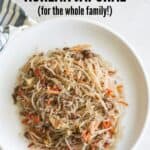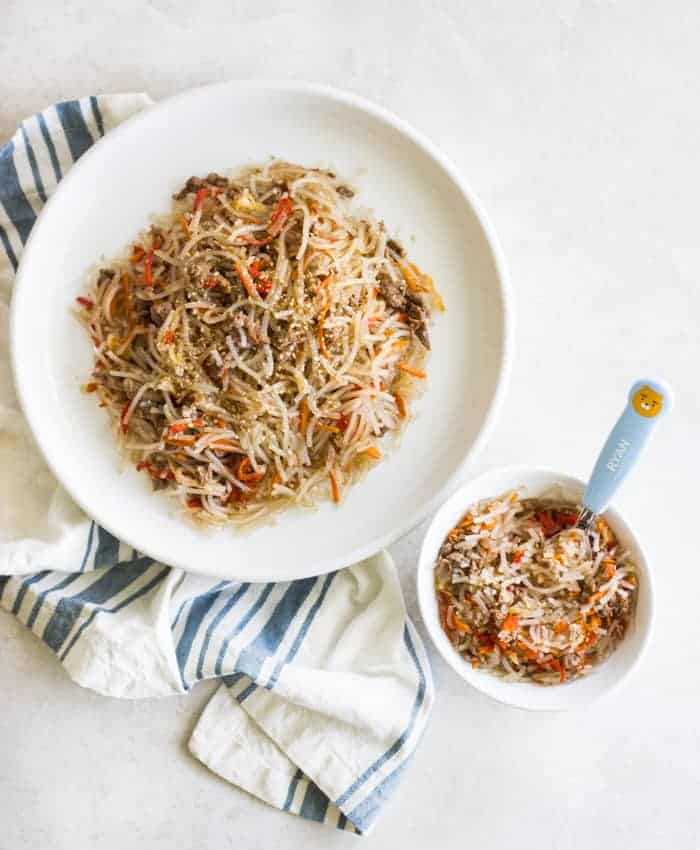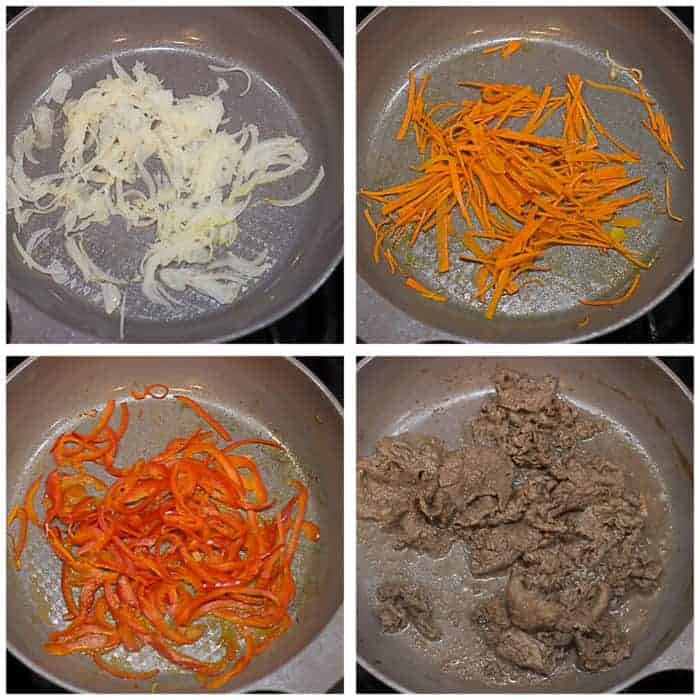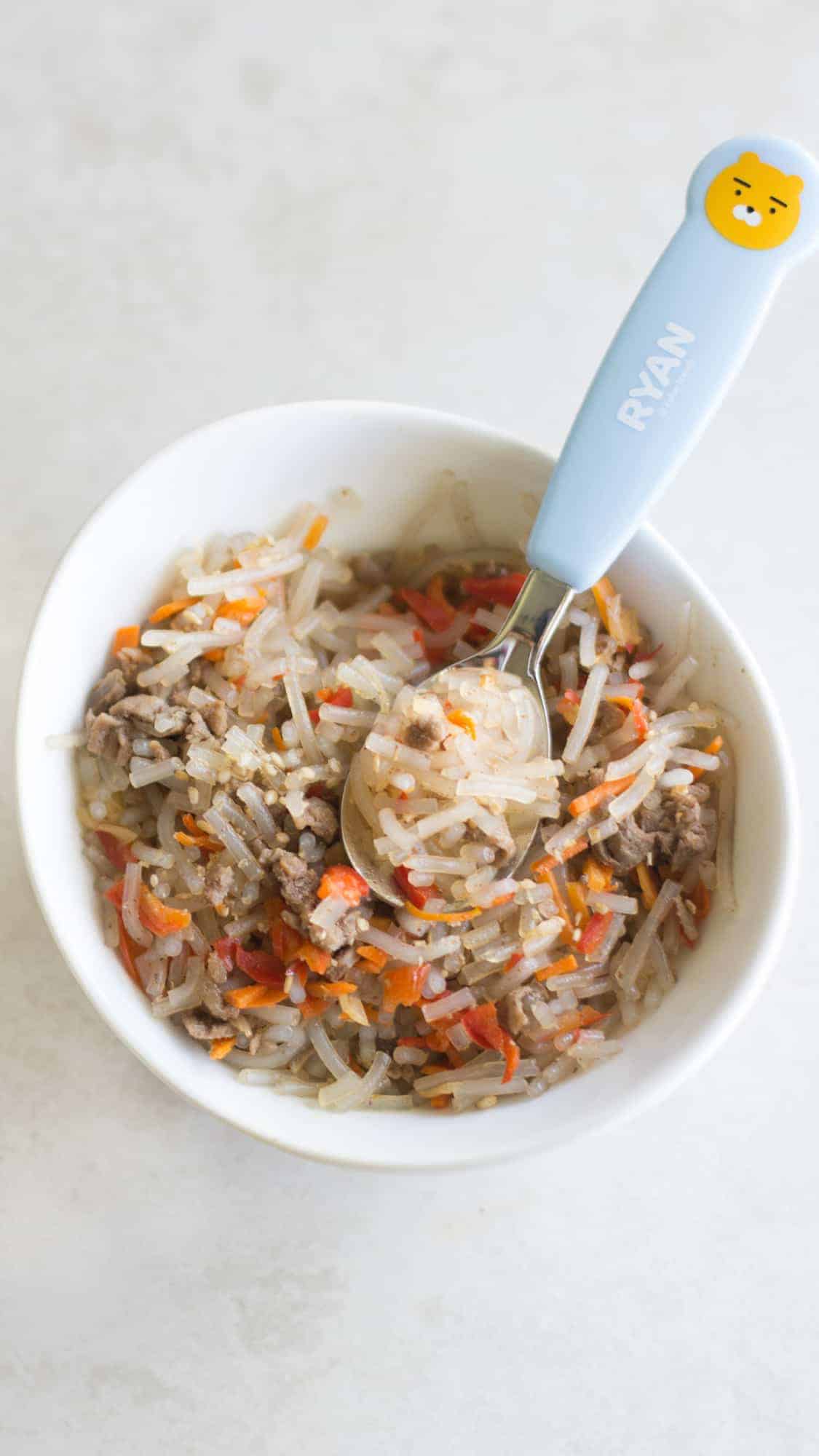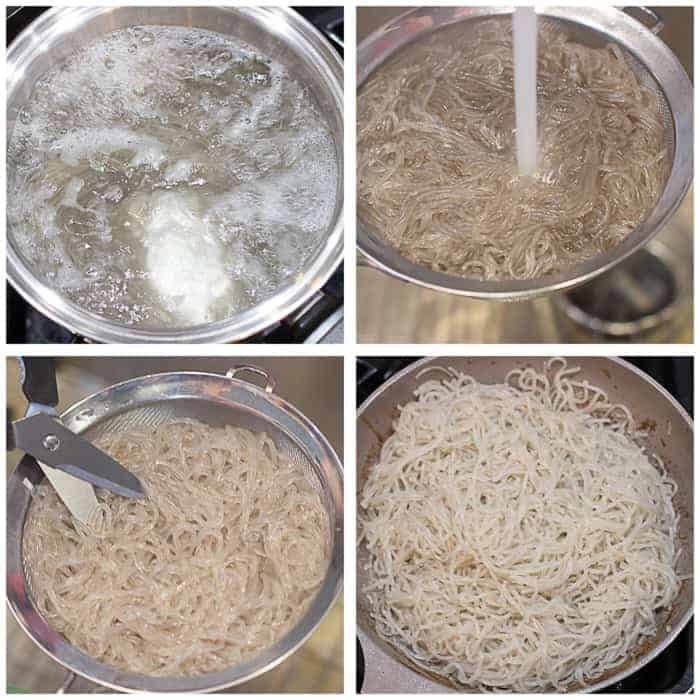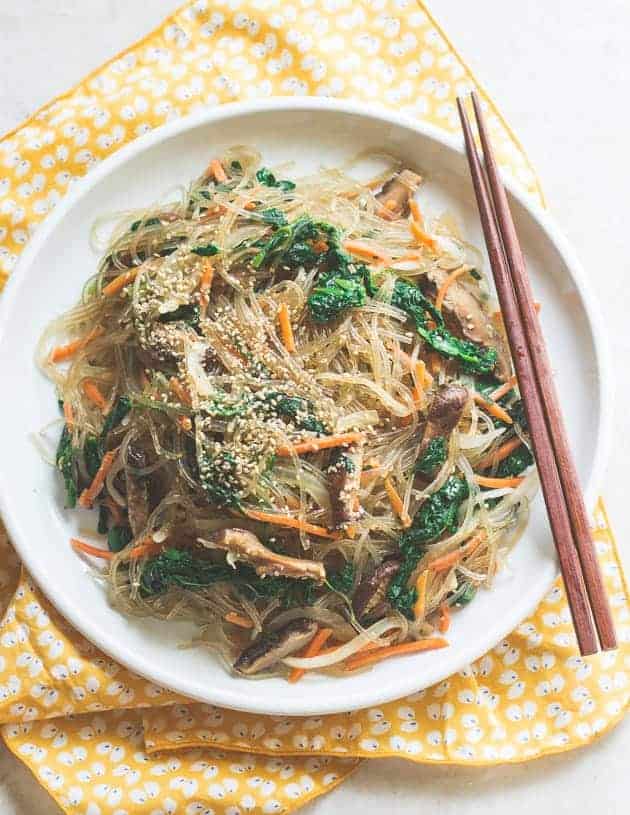What is Japchae?
Japchae is Korean sweet potato noodles, or “dangmyeon“, stir-fried with an assortment of colorful vegetables and meat. It is one of the most iconic Korean dishes, and when I see a huge plate of japchae, it conjures up so many memories from all the past special occasions and holidays. That’s because for us Koreans, no gathering and celebration is complete without japchae! I’m not trying to brag here (or maybe I am!), but growing up, my mom was notorious in our community as the best japchae maker, and I will forever associate this dish with her “special” touch. Korean cooking is so mysterious and magical, I find. Sure, you can follow a recipe to the T. But it will taste different depending on who made it! There’s actually a term for this, and it’s called “sohn mat,” literally translated the “taste of the hand.” I wish I had my mom’s sohn mat but I shall have to settle with what I’ve got ;).
What makes this dish baby and toddler friendly?
Traditionally, japchae is high in sodium. The sauce/marinade for japchae uses a lot of soy sauce and the individual vegetables are normally seasoned with salt. Because the sweet potato noodles have a very neutral flavor, this is necessary for the average adult palate. However, this is not very ideal for babies whose kidneys are not able to handle a lot of salt at this time. So I sought out to tackle the challenge of achieving maximum flavor with minimal use of sodium-rich ingredients so that not only your baby, but the rest of the family can enjoy together! Family meals. That’s always my goal!
Expert Tips
Cut all the ingredients into thinly sliced/julienned strips. I love to use my mandolin for this as it makes the process go super quick.Cook each ingredient separately to take into consideration the different cooking times and to prevent colors from bleeding into one another. By doing so, the flavor, texture, and color of each ingredient will be maintained and shine through when the dish is enjoyed as a whole. A simple tip on how to make vegetables super soft if making this to enjoy with your baby (don’t need to do this for toddlers or older children): when cooking them in a pan, add a small splash of water and cook for a couple of minutes. Depending on how thinly you sliced the vegetables, you may or may not need to cover the pan with a lid. What this does is create a mini steaming effect. Marinate the beef in my soy sauce-free bulgogi sauce. This will not only enhance the flavor of the beef and the dish as a whole but once cooked, it will leave behind all this yummy, flavorful juice. Don’t toss it! Cook the noodles last! Normally, the noodles are prepared first, tossed in a soy-based sauce to keep them from sticking together (and for flavor), and set aside. But what I’ve found is waiting until the very end to cook the noodles and adding to the pan to soak up all the leftover juice from the beef helps to achieve a soft, chewy texture.
The last step is to toss all the ingredients together in a large mixing bowl by hand. Then set aside a portion for your baby and chop everything with scissors so that you get tiny pieces. To the rest of the mixture, add the sauce. Season to taste. You can certainly add more soy sauce and/or sesame seeds if you wish.
Ingredient Suggestions
While I kept it really simple by using just carrots, red bell peppers, onion, and bulgogi, you can absolutely add whatever vegetables you’d like. J apchae literally means “mixture of vegetables” so invite all kinds of delicious, colorful vegetables to the party. Traditionally, spinach is added, but I didn’t want to go through the trouble of blanching the spinach. Do what you can!
How to cook the noodles
Bring a large pot of water to a boil. Cook the noodles according to the package directions, 6-8 minutes. Rinse in cold water to stop the cooking process. Drain and cut the noodles into shorter strands. These sweet potato starch noodles are great not only for stir-frys but also soups and stews! Now, some will argue that you shouldn’t cook the noodles. Instead, they should be soaked in hot water for 20 minutes or so. My mom would agree. However, since this recipe is geared towards babies and toddlers, I’ve found that boiling the noodles results in a softer consistency. You can give it a try and see which method you prefer!
How to serve leftovers
Once you put the noodles in the fridge, the starch in the noodles will harden. Reheat in the microwave for a couple of minutes (mixing in between) .This ensures they don’t get too mushy. Did you make this baby and toddler-friendly Japchae, or Korean Sweet Potato Noodles? Follow me on Instagram post a photo and tag me, post a photo on my Facebook page, or save it to Pinterest. I love to see what you’re making! If interested in a meatless version, check out my vegetarian japchae. Keep in mind, this recipe is not baby-friendly but will be great for older children and adults.
Recipe
